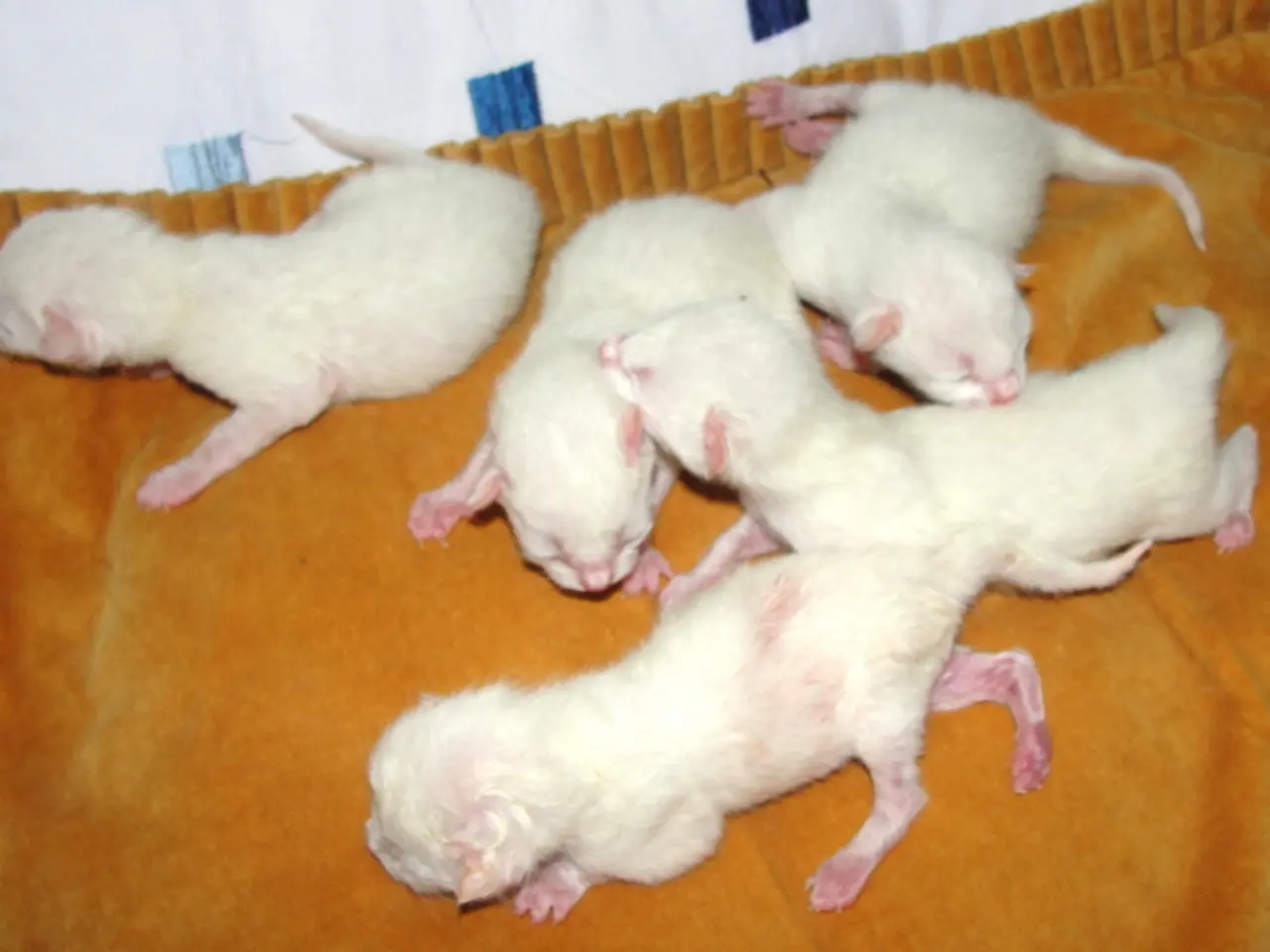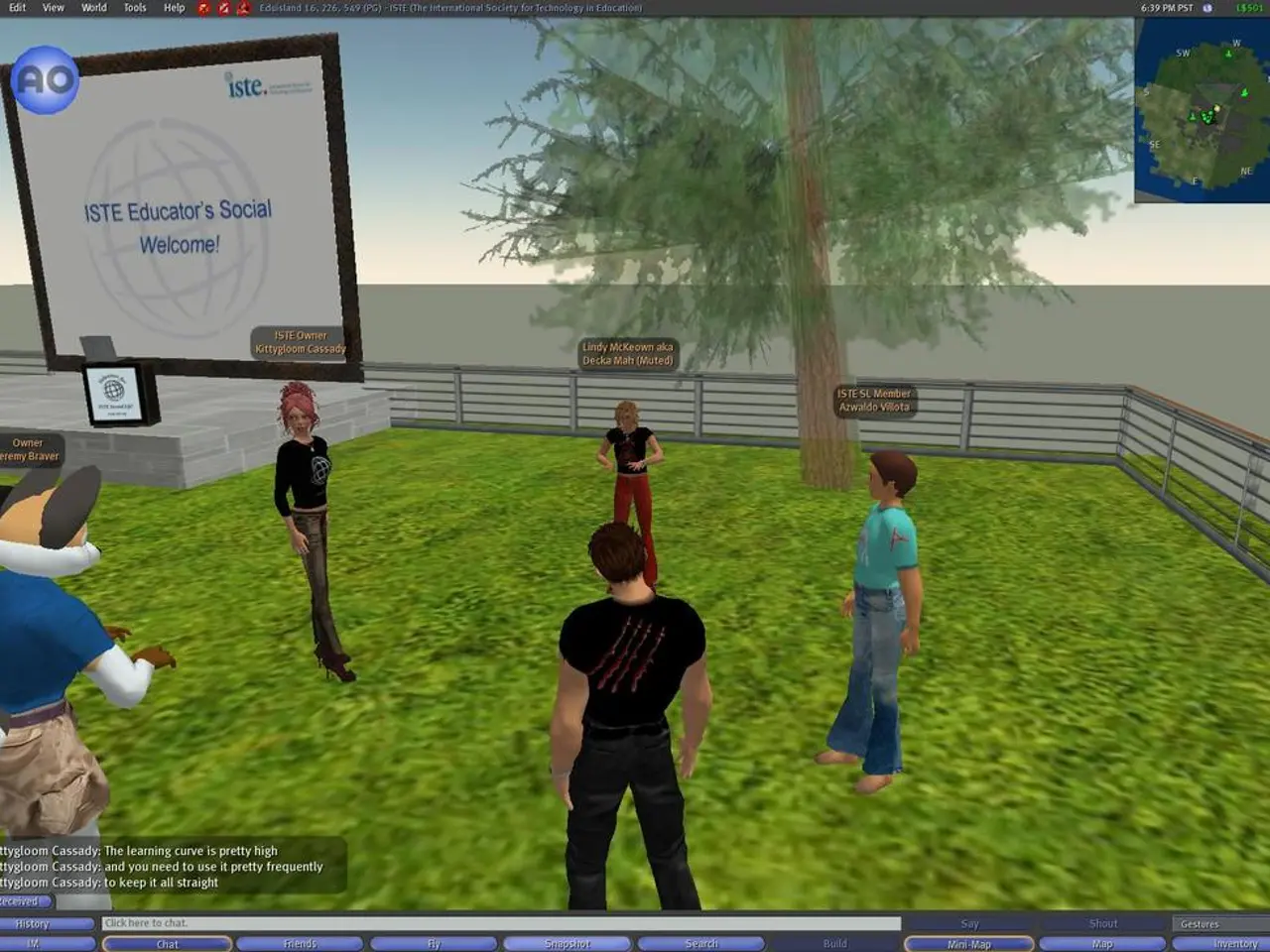Stimulating Physical Interaction Bolsters Relationships via Oxytocin Channels
Oxytocin Acts as a Key Factor in Cross-Species Bonding Between Humans and Rats
A new study published in Current Biology and conducted by Hirotaka Sakamoto et al., sheds light on the role of oxytocin in cross-species bonding, particularly in touch-induced social bonding between humans and rats.
The research suggests that oxytocin plays a crucial role in the increase in affinity for human hands induced by pleasant touch sensation with human touch-induced play behavior in rats. The study identifies the ventrolateral part of the ventromedial hypothalamus (VMHvl) as an area with increased oxytocin receptor (OTR) expression in rats with high affinity for human hands.
Inhibition of oxytocin signaling in the VMHvl reduces affinity-like behaviors from rats to human hands, indicating that oxytocin signaling in this region is essential for the development of this bond. Retrograde and anterograde tracing studies show that a subset of oxytocin fibers in the VMHvl originate from the supraoptic nucleus (SON), suggesting that affinity-like behavior from rats to human hands may be controlled by oxytocin signaling from magnocellular neurons.
The bonding is facilitated through oxytocin pathways. Juvenile-adolescent rats develop a strong affinity for human hands through playful contact achieved by repeated tickling with human hands. This bonding mechanism likely parallels that observed in human-dog models, where mutual interpersonal interactions like gazing and touch elevate oxytocin levels in both species, producing a positive feedback loop reinforcing social attachment.
Oxytocin promotes positive social interactions by activating reward pathways and modulating emotional and social processing, which can extend across species boundaries when social touch or interaction occurs. Oxytocin released during social touch stimulates oxytocin receptors in both species, enhancing feelings of safety, trust, and social reward that are critical for establishing and maintaining social bonds.
The study advances our understanding of how oxytocin shapes social behavior and may inform the development of therapeutic strategies to promote positive social interactions. However, direct mechanistic studies on oxytocin’s role in human-rat bonding via touch are limited in the cited literature, and additional species-specific research would further clarify these pathways.
References:
[1] Lim, K. O., & Young, L. J. (2013). Epigenetic regulation of oxytocin receptor genes in the brain. Neuropharmacology, 65(1), 15-24.
[2] Carter, C. S., & Keverne, E. B. (2002). Oxytocin and social attachment: from molecule to behavior. Annual Review of Neuroscience, 25(1), 169-198.
[3] Kosfeld, M., Heinrichs, M., Zak, P. J., Fischbacher, U., & Fehr, E. (2005). Oxytocin increases trust in humans. Nature, 435(7044), 673-676.
[4] Uvnäs-Moberg, K. (2012). Oxytocin and stress reduction. Journal of Psychosomatic Research, 72(5), 484-490.
1) The findings from the current study suggest that neuroscience, particularly the role of oxytocin, significantly influences mental-health and health-and-wellness, as it contributes to cross-species bonding between humans and rats.
2) The science community is intrigued by the recent neuroscience news that reveals oxytocin's importance in establishing social bonds, not just within a species, but also across species boundaries, such as the bond formed between humans and rats.
3) As the research delves into therapies-and-treatments for promoting positive social interactions, understanding the role of the brain and neuroscience in cross-species bonding could lead to groundbreaking advancements in health-and-wellness and mental-health.




